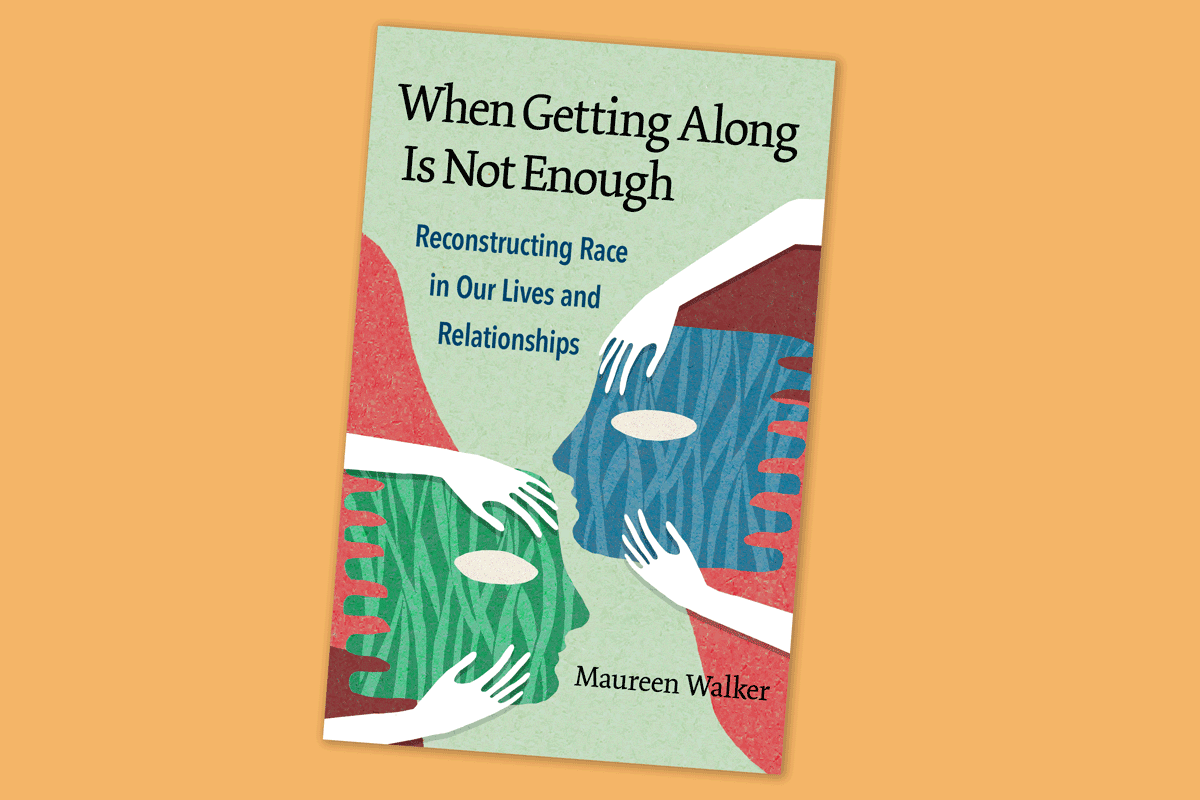 If conventional wisdom is to be believed, women are notoriously good at getting along. Cultural pundits, from scholarly theorists to political wags, suggest that women are better suited and somehow more prone to connect with others for good. This notion may have a certain surface appeal, particularly to those of us who want to promote healing in a world marred by mortal violence and near-normative violations of human dignity.
If conventional wisdom is to be believed, women are notoriously good at getting along. Cultural pundits, from scholarly theorists to political wags, suggest that women are better suited and somehow more prone to connect with others for good. This notion may have a certain surface appeal, particularly to those of us who want to promote healing in a world marred by mortal violence and near-normative violations of human dignity.
However, women who dare to change worlds know that getting along is not enough. Just getting along allows us to be friendly neighbors, cooperative colleagues, best friends, and maybe even intimate partners. But it is not enough to allow us to build authentic, in-depth connections that bring out the best in ourselves and others, and in our society as a whole. In order to do that, we must delve deeper and ask ourselves hard questions—particularly, as we honor the life and work of Dr. Martin Luther King, Jr., around the issue of race.
After the 2016 election, analyses and demographic parsing revealed entrenched racialized divides among women. Race emerged as an undeniable constant: as a signifier that gives meaning to our lives, shaping our beliefs about who we are, who we can be, and how we should be regarded by others. Furthermore, race delineates the parameters of belonging and determines the measure of worth we accord others—how we perceive their credibility and deservingness, and how we enact power in our relationships with them.
Although the notion of race itself may be a biological fiction, it is a political reality, one that has functioned as a pernicious strategy of disconnection, violence, and violation. Whether through collusion, co-option, or coercion, women are deeply implicated in sustaining the norms and systems of racial disconnection.
Women of good will (and that, I believe, includes most of us) regularly enact racialized ideologies in real life. Indeed, these ideologies may be in large part cultural legacy, implicit yet potent, unknown even to ourselves. We can begin to know how race shapes our relationships by observing our habits of disconnection. For example, what are the feelings and thoughts we dare not express to someone of a different race—even when that person is dear to our hearts? Certainly not all feelings and thoughts are meant to be shared; some are private and rightfully so. There is, however, a distinction to be made between privacy and secrecy.
Privacy may represent thoughtful restraint, in service of further growth in the relationship. Secrecy, on the other hand, is a habit of disconnection that functions to protect and preserve a preferred image or narrative. Such withholding creates “dead zones” in a relationship. We might observe how and under what circumstances we create these “dead zones.” How big and unnavigable do we believe them to be? How readily do we criticize “them” and what “they” are like when we are in same-race company? What parts of ourselves and of our experience do we withhold in order to preserve and protect the appearance of connection, rather than allowing ourselves to be more fully known and present in a relationship? This is a habit of disconnection that stifles our desire for connection and belies our intentions to engage the richly textured realities that define our shared humanity.
I wrote When Getting Along Is Not Enough as an invitation and a guide for remaking the meaning and function of race in our lives. One of the practices that enables this transformation is what I call “disruptive empathy.” The two words don’t flow easily together, intentionally so, because empathy is not an easy skill. We tend to think of empathy as demonstrations of niceness, kindness, and caring—laudable actions all, but not stand-ins for growth-fostering empathy.
A popular metaphor that more accurately captures the disruptive dynamics of empathy is “walking a mile in another’s shoes.” To walk in another’s shoes implies at minimum the willingness to shed our own. This process is disruptive because it requires a certain level of willful de-stabilization. Specifically, we have to loosen our attachment to the narratives about self and other. We must be willing to be surprised and accepting of parts of ourselves we previously found embarrassing or shameful. In other words, the anchoring value of disruptive empathy is courage, not comfort.
I like to describe disruptive empathy as a dynamic process facilitated by three intentions: awareness, respect, and compassion. Here are just a few of the questions that facilitate the movement through this experience.
Awareness: What am I feeling and thinking? Desiring? Remembering? Is there a cherished narrative or image that I want to shield from scrutiny?
Respect: What is the purpose of this encounter? Am I trying to win? Placate? What might happen if I risk genuine curiosity about this other person?
Compassion: How did this person come to be where she is in this encounter right now? What aspects of our shared humanity is this encounter revealing? Under what conditions do I speak, interpret, and behave similarly?
When Getting Along Is Not Enough is not a mandate for forced harmony. It is an invitation to shed the illusions that allow us to settle for the appearance of harmony, rather than richly textured and authentic connection. It is an invitation to transform the life-limiting imagination of who we can be and how we must engage each other as racialized beings. This book is intended to help us on a shared journey of healing and ask: How might we dare to change worlds? Who, together, might we become? And most important, are we willing?
Maureen Walker, Ph.D., is a senior scholar at the Wellesley Centers for Women and a founding scholar of the International Center for Growth in Connection, formerly the Jean Baker Miller Training Institute. She is the author of When Getting Along is Not Enough: Reconstructing Race in Our Lives and Relationships, a book that offers a roadmap to personal transformation and cultural healing to repair the damage wrought by racism.



 I could not help but be reminded of something that my grandmother Donnie would say to young people in our family. If anyone one of us dared to violate her standards of good grooming or “respectable” behavior, she would say: “Don’t go out acting like you don’t have people.” At the time, her counsel was little more than an irritation. “Having people” could mean anything from representing your family by working hard in school to properly ironing a ruffled blouse. It’s a safe bet that my grandmother never heard of Maslow, and I’m guessing she lived the better part of eight decades without ever using the words “self-esteem.” She did, however, know a lot about respect, reverence, and dignity. What we now call self-esteem is what my grandmother expressed as self and other--awareness. Her version of self-esteem was awareness of connection to community. Further, it meant appreciation for the care that community bestows, and an obligation to represent that care in the world and to the world. Put plainly the lesson was this: how you go out into the world is not just your private business; your behavior reflects on and has consequences for the communities from which you come.
I could not help but be reminded of something that my grandmother Donnie would say to young people in our family. If anyone one of us dared to violate her standards of good grooming or “respectable” behavior, she would say: “Don’t go out acting like you don’t have people.” At the time, her counsel was little more than an irritation. “Having people” could mean anything from representing your family by working hard in school to properly ironing a ruffled blouse. It’s a safe bet that my grandmother never heard of Maslow, and I’m guessing she lived the better part of eight decades without ever using the words “self-esteem.” She did, however, know a lot about respect, reverence, and dignity. What we now call self-esteem is what my grandmother expressed as self and other--awareness. Her version of self-esteem was awareness of connection to community. Further, it meant appreciation for the care that community bestows, and an obligation to represent that care in the world and to the world. Put plainly the lesson was this: how you go out into the world is not just your private business; your behavior reflects on and has consequences for the communities from which you come. One of the foundational tenets of Relational-Cultural Theory is that the purpose of being in relationship. Having a sense of agency then is to claim our responsibility as co-creators of human possibility. I can think of a no more telling example of this perspective than a conversation I had with a young Indonesian man a few years ago. He told me that as a member of a religious minority in his country, he knew that he had to work twice as hard to get half as far: precisely the advice that I had heard growing up in a racially stratified culture decades earlier. Interestingly, this belief did not engender defeatism or victimhood. Rather, it confirmed the obligation to community: to advance the contributions of preceding generations and to provide “uplift” for future generations. Further, it instilled confidence in our ability and obligation to make the world a little bit better for others.
One of the foundational tenets of Relational-Cultural Theory is that the purpose of being in relationship. Having a sense of agency then is to claim our responsibility as co-creators of human possibility. I can think of a no more telling example of this perspective than a conversation I had with a young Indonesian man a few years ago. He told me that as a member of a religious minority in his country, he knew that he had to work twice as hard to get half as far: precisely the advice that I had heard growing up in a racially stratified culture decades earlier. Interestingly, this belief did not engender defeatism or victimhood. Rather, it confirmed the obligation to community: to advance the contributions of preceding generations and to provide “uplift” for future generations. Further, it instilled confidence in our ability and obligation to make the world a little bit better for others.